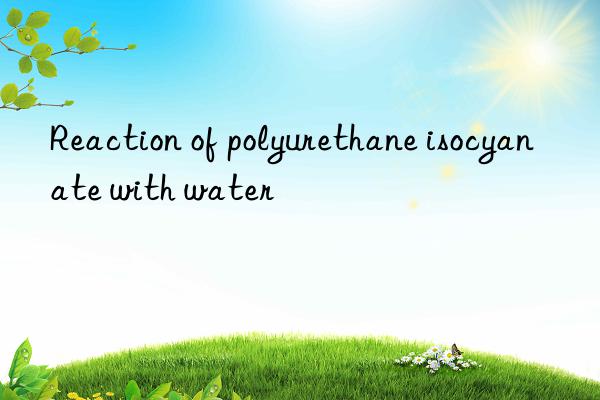
German chemist A.Wurtz believes that isocyanate reacts with water to first generate unstable carbamic acid, which is then decomposed into carbon dioxide and amines. In the presence of excess isocyanate, the generated amine and isocyanate continue to react to form substituted urea. Their reaction processes are expressed as follows:
R—NCO+ H2OR—NHCOOHR—NH2+CO2↑
R—NH2 +R—NCOR—NHCONH—R
(1 )The application of the reaction between isocyanate and water can be seen from the above reaction formula. 1 water molecule can react with 2 NCO groups, that is, water can be regarded as a Chain extenders or curing agents grow molecular chains to form polymers (polyurea). The product of the reaction between NCO-terminated polyurethane prepolymer and water isPolyurethaneurea.
1mol (18g) water and 1mol diisocyanate (such as TDI 174g or MDI 250g) reacts to generate 1 mol (22.4L) of carbon dioxide. It can be seen that a small amount of water can consume a large amount of diisocyanate and produce a large amount of gas.
In isocyanate, During the storage of terminal NCO prepolymers (including various NCO-containing products), moisture in the air and moisture attached to the container wall will reduce the NCO content, causing the prepolymer to increase in viscosity or even gel; and , the carbon dioxide gas produced will also cause the container to expand, so isocyanate and prepolymers should be isolated from moisture during storage. When synthesizing polyurethane prepolymers and various products, the moisture in raw materials such as polyester or polyether polyols, solvents, fillers, etc. should be controlled in a very low range. Otherwise, it will cause serious inaccuracies in design measurement and obtain no results. product of the desired molecular weight.
Diisocyanate and The principle of water reaction to generate carbon dioxide gas is used to prepare polyurethane foams. Moisture-cured polyurethane coatings and adhesives generally also utilize isocyanates and the slow chain extension reaction with water. In the synthesis of water-based polyurethanes, water is also used as a chain extender even in the preparation of special elastomers.
(2)Factors affecting the reaction rate The reactivity of isocyanate and water is affected by the isocyanate structure and reaction mixture It is affected by many factors such as water concentration, temperature, and catalyst.
(3)Similar to hydroxyl groups, increasing the concentration of water in the reaction mixture can increase the reaction rate Increase. Increasing the reaction temperature under a certain reactant concentration will of course also increase the reaction rate constant. The reactivity of water and isocyanate is lower than that of primary hydroxyl groups, and is equivalent to that of secondary hydroxyl groups. In the absence of a catalyst, the reaction rate is slow due to the poor affinity between water and isocyanate. In the presence of a catalyst, the reaction between isocyanate and water can be accelerated. The catalytic activity of amine catalysts is higher than that of stannous octoate. The order of high and low catalytic activity of several tertiary amines is: triethylenediamine>four Methylbutanediamine>Triethylamine>N-alkylmorpholine.



 微信扫一扫打赏
微信扫一扫打赏
